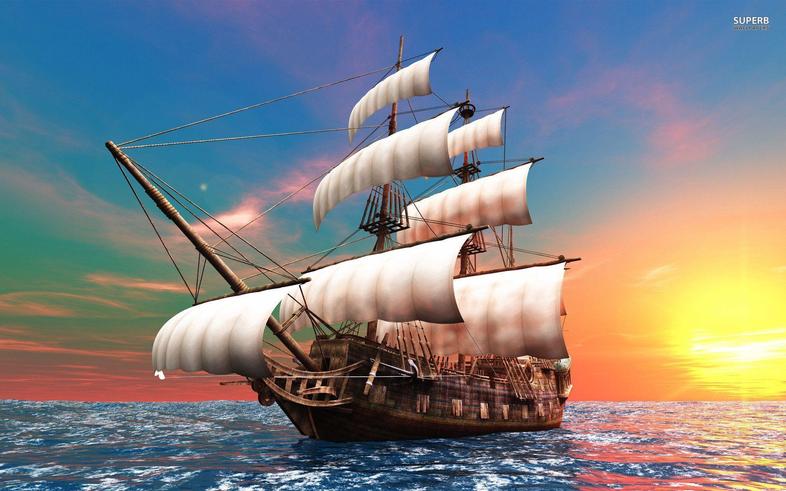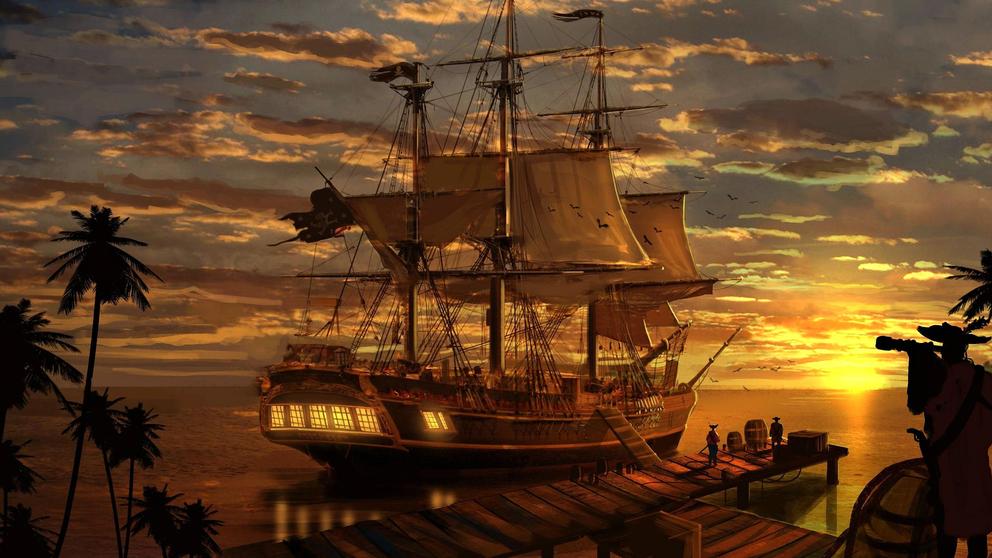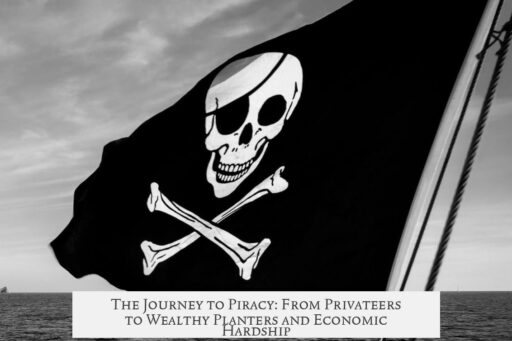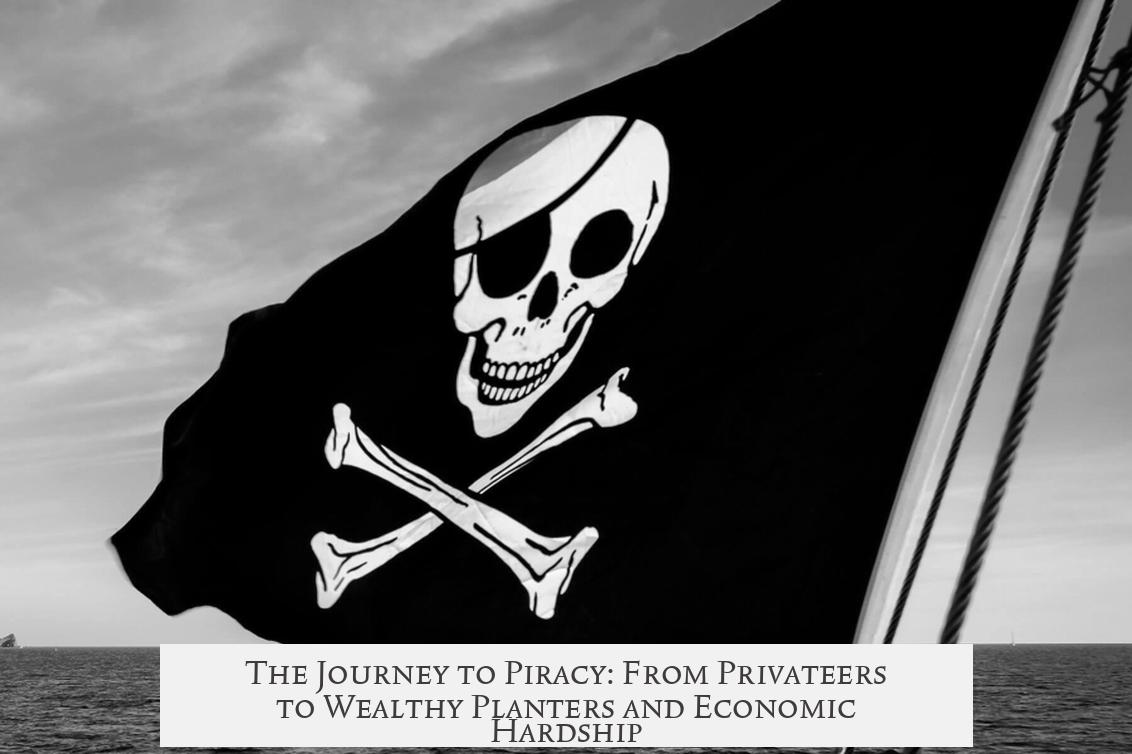People became pirates through various routes such as privateering, capture, economic hardship, mutiny, and unusual personal decisions. The transition to piracy often involved shifting loyalties and desperate choices amid changing political and economic conditions in the early 18th century.

One common path to becoming a pirate was through privateering. Privateers held legal commissions called letters of marque that allowed them to attack enemy ships during wartime. During the War of Spanish Succession (1702-1713), Britain authorized privateers to plunder French and Spanish vessels. Many famous pirates, such as Edward England and Blackbeard (Edward Thache), started as privateers.
When the war ended with the Treaty of Utrecht in 1713, these commissions were revoked. However, many privateers continued attacking enemy ships, ignoring the treaty. Britain’s government, to avoid renewed conflict, began cracking down on these renegade privateers, now regarded as pirates. Without support from their former employer, many pirates turned to attacking British ships and flew the Jolly Roger flag, signaling their break from national allegiance.

Capture was another way to become a pirate. Bartholomew Roberts, one of the most notorious pirates, was captured in 1719 and quickly joined his captors, becoming their captain within three months. Similarly, Howell Davis was captured by the pirate Edward England in 1718 and soon rose to pirate leadership. This route shows how forced integration into piracy could lead to full participation and command within pirate crews.
Economic hardship also drove many sailors to piracy. After the War of Spanish Succession, the British Royal Navy was reduced significantly, leaving many sailors unemployed. Merchant ships offered low wages and poor conditions. Abuse by captains was common. For these sailors, piracy offered an alternative with the hope of wealth and better conditions, despite its risks.

Mutiny was another entry point. Some pirates began by staging a mutiny to take control of a ship. Henry Avery led a brief, bloodless mutiny in 1694 to seize his vessel. In 1718, former pirates Phineas Bunce and Dennis Macarty led a nearly bloodless mutiny in the Bahamas. Pirates like Thomas Anstis and Howell Davis also returned to piracy through mutiny around 1719. Over time, mutinies became more violent as pirates faced increased crackdowns. For example, in 1721, Philip Roche and his associates planned to kill their entire crew at night, and in 1726 William Fly’s mutiny resulted in murders of the captain and mate.
Some entered piracy due to unusual personal circumstances. Stede Bonnet was a wealthy planter from Barbados who became a pirate around 1717, possibly driven by marital issues. His pirate career lasted just over a year. Samuel Bellamy enlisted on a ship in 1716 aiming to loot wrecked Spanish treasure fleets—a form of piracy—and soon escalated to attacking Spanish ships and overthrowing their own captain unwilling to attack British ships.

| Path to Piracy | Description | Examples |
|---|---|---|
| Privateering | Serving under legal wartime commission; turned rogue after peace treaties revoked commissions. | Edward England, Blackbeard |
| Capture | Captured by pirates and integrated into their ranks. | Bartholomew Roberts, Howell Davis |
| Economic Hardship | Unemployed or mistreated sailors sought wealth and better conditions. | Many unnamed former Royal Navy sailors |
| Mutiny | Seizing a ship through a crew revolt to start piracy. | Henry Avery, Philip Roche, William Fly |
| Unusual Circumstances | Individual choices or unusual events triggered piratical careers. | Stede Bonnet, Samuel Bellamy |
Political and economic factors heavily influenced these transitions. The end of the War of Spanish Succession reduced naval employment and outlawed privateering. Former privateers, sailors, and mercenaries faced the harsh realities of lost income and opportunities. Many preferred piracy’s potential profits over destitution or harsh merchant shipping conditions.
Mutinies often arose from discontent within ship crews, either from mistreatment or a desire to escape the strict discipline and poor pay of naval or merchant service. Led by either ex-pirates or ambitious sailors, mutinies aimed to seize control of vessels and reject lawful authority entirely.

In some cases, people became pirates through personal motivations unrelated to economic or political pressure. For example, Stede Bonnet’s decision to turn pirate by outfitting his ship at his own expense suggests complex personal reasons.
In summary, becoming a pirate was rarely a single straightforward decision. Rather, it stemmed from a mix of opportunity, forced circumstances, and choice. Many started legally as privateers. Some joined by force or through mutiny. Others reacted to economic desperation or personal situations. These varied routes came together during the Golden Age of Piracy, roughly from 1715 to 1725, a time defined by war’s end and shifting power on the seas.
- Piracy often started as legal privateering during wartime then switched after peace treaties revoked licenses.
- Capture by pirates sometimes forced sailors into piracy, with rapid advancement in pirate ranks.
- Economic hardship post-war left many sailors seeking better pay and conditions through piracy.
- Mutiny was a frequent method to seize ships and start pirate crews.
- Some pirates joined due to unusual personal reasons rather than direct economic or political factors.
How Did People Become Pirates? A Closer Look at the Road to High Seas Infamy
People became pirates through various paths, but one of the main routes was transitioning from legal privateers to outright pirates. This shift often happened when wartime commissions ended, yet seafarers continued their plundering without legal backing. Let’s dive into the fascinating routes people took to join the notorious pirate ranks.
Ever wondered how a once-respected sailor or privateer suddenly became a pirate? The story isn’t always straightforward. Some were pressed by circumstance, while others seized mutiny opportunities or simply fell into piracy by chance.
From Privateer to Pirate: When Legal Letters Expired
Initially, many pirates cut their teeth as privateers—state-licensed sailors authorized to attack enemy ships during war. These privateers held a letter of marque, a legal pass to plunder foes like France and Spain during conflicts such as the War of Spanish Succession (1702-1713), also called Queen Anne’s War.
This war was a hotbed for budding pirates like Edward England and Edward Thache, better known as Blackbeard. Both started under lawful privateering commissions granted by the British government. When peace returned and Britain revoked these letters, many privateers faced a stark choice: hang up their swords or continue their raids illegally.
Guess which choice was more tempting? Many privateers simply ignored peace treaties like the 1713 Treaty of Utrecht and kept raiding French and Spanish vessels, now breaking the law and earning the pirate label.
When the British government caught wind and pressured them to stop, former allies turned against the Crown. Pirates struck at British ships too, proudly flying the Jolly Roger—the skull and crossbones—declaring their freedom from any country’s rule. Talk about a rebellious career switch!
Captured and Convinced: Becoming a Pirate by Seizure
Not everyone opted into piracy willingly. Sometimes capture led to conversion. Famous pirate Bartholomew Roberts found himself seized by pirates in 1719 while serving as a third mate on a slave ship. Instead of resisting, he embraced the pirate life. Within three months, Roberts took over as captain after Howell Davis died—who himself had been captured a year earlier by Edward England.
Captivity turned sudden allies may sound like a movie plot, but in pirate reality, it was common. Facing harsh conditions or bleak prospects, some sailors preferred the promise of freedom and spoils piracy offered, even if it meant joining their captors.
Economic Hardship: The Unseen Driver Behind Pirate Enlistment
The end of the War of Spanish Succession didn’t just stop privateering commissions; it flooded the job market with unemployed Royal Navy sailors. Veteran seamen now faced terrible working conditions and drastically reduced wages if they found any merchant work at all.
Picture this: exhausted, underpaid sailors mistreated by captains, stuck on miserable ships with no hope for improvement. Pirate life, with the lure of plunder and democracy on the ship (a surprisingly egalitarian setup at times), began to look like a sweet deal.
It’s no surprise that many sailors jumped ship to chase freedom, wealth—or just an escape from abuse—by turning pirate. Piracy offered autonomy and a chance to dictate one’s fate in harsh times.
Mutiny: Pirate Life by Force and Conspiracy
Not all pirates started out chasing treasure for fun. Some took control by force, orchestrating mutinies against their captains. These ranged from bloodless takeovers to brutal murders of officers.
For example, Henry Avery’s 1694 mutiny was a swift, peaceful takeover where the captain and loyal crew surrendered without a fight. Contrast that with the 1721 plan by Philip Roche, who plotted to murder his entire crew in cold blood with axes, tossing them overboard under cover of darkness.
Mutinies usually began with a core of discontented sailors. Some leaders, like Phineas Bunce and Dennis Macarty, led teams of pirates fresh from royal pardons, seizing vessels without much bloodshed. But as anti-piracy crackdowns intensified, mutinies grew more violent.
The brutal mutiny of William Fly in 1726 involved murdering the captain and mate, sparing only essential crew members like the doctor and carpenter. Clearly, the pirate path could be as bloody as its reputation suggests.
Unusual Routes: Wealthy Planters and Treasure Hunters Turned Pirates
Pirate origins weren’t always humble sailors gone rogue. Take Stede Bonnet, a wealthy English planter from Barbados. In 1717, possibly facing personal troubles, Bonnet equipped his own ship and embarked on piracy. His adventure lasted just over a year before capture and execution, but his story proves pirate life could attract the well-to-do.
Samuel Bellamy is another intriguing case. Having served in the Royal Navy during the War of Spanish Succession, Bellamy joined a New England ship aiming to loot the recently wrecked Spanish treasure fleets off Florida. While this act skirted legal piracy, Bellamy and his crew soon crossed the line by attacking Spanish ships openly. They even ousted their cautious captain, Benjamin Hornigold, to pursue full-blown piracy.
Lessons from Pirate Origins: What Can We Learn?
Understanding pirate recruitment helps dispel myths of piracy as only lawless evil-doers or lone rogues. Often, becoming a pirate was a pragmatic choice borne from economic desperation, opportunity, or even coercion.
So, if you’re pondering why ordinary people became pirates, the answer is: survival, profit, and rebellion. The pirates captured the imaginations of the time and ours by embodying risky freedom and defiance of authority.
If you fancy yourself a seafarer today—or just a history buff—remember that many pirates once walked a fine line between legality and outlaw. Their stories invite us to consider how law, economy, and personal circumstance intertwine to push people toward extreme options.
Would You Turn Pirate?
Given the bleak alternatives many sailors faced, becoming a pirate might seem like a logical choice. Would you risk hanging for a chance at riches and freedom? Or would the threat of death at the gallows keep you loyal to the Crown?
Understanding the origins of pirates shows us how complex human choices are—even on the turbulent high seas. Next time you see a Jolly Roger, remember the tangled past behind every pirate legend.




